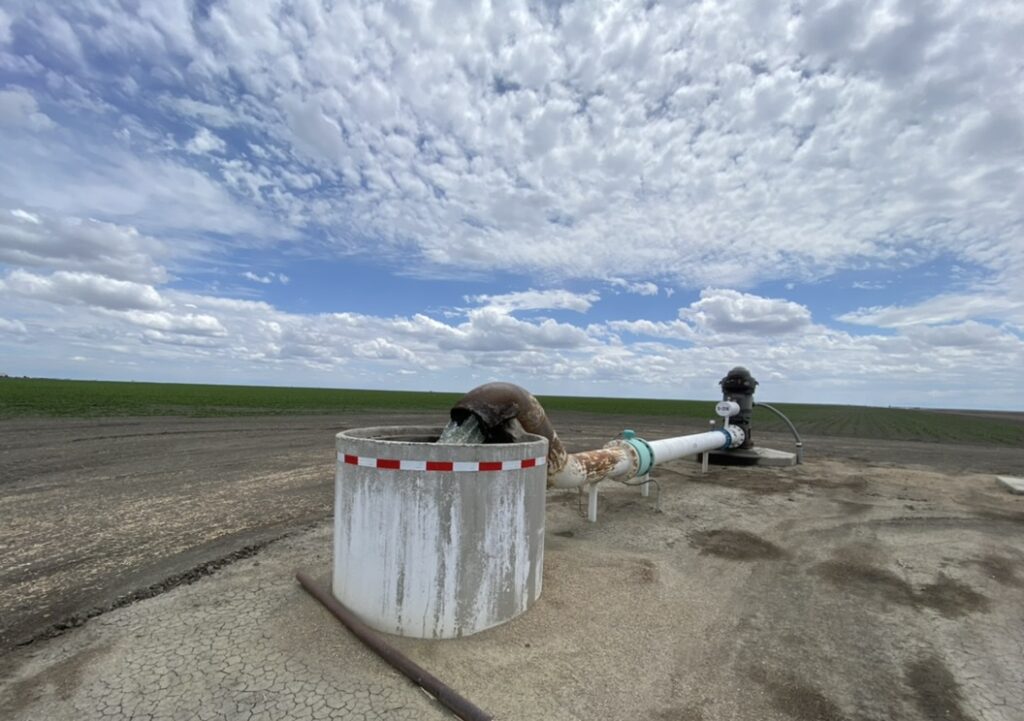The San Joaquin Valley is sinking and it might continue to do so for centuries if groundwater levels aren’t recovered, according to a new Stanford University study.
The study, which was published on Thursday in the Water Resources Research journal, simulated 65 years of land sinking, called subsidence, at a site near Hanford in Kings County. It found that even if all groundwater pumping stopped immediately, sinking would continue. The only hope is for groundwater levels to come back up.
“We try and point out that stabilization, which has kind of been assumed to be sufficient, that assumption is wrong,” said Matthew Lees, a geophysics PhD student and lead author of the study. “The good news is that if the water levels recover by a relatively small amount, the subsidence will rapidly reduce. So you don’t have to do that much to get an improvement, but you do have to do something.”
The state’s 2014 Sustainable Groundwater Management Act (SGMA) created groundwater sustainability agencies (GSA) in order to bring overpumped aquifers into balance by 2040. Groundwater has been overpumped to support the valley’s ag industry for decades resulting in subsidence which has damaged roads, bridges and canals.
The study comes as the state’s Department of Water Resources prepares to reevaluate groundwater sustainability plans covering most of the valley. The department rejected all of the San Joaquin Valley plans in January and GSAs have until late July to submit corrected plans.
But many plans might be in trouble when it comes to subsidence. Some plans used a “glide path” approach, allowing groundwater to continue dropping until they stabilize at a minimum level, Lees said.
“From a subsidence perspective, this might not be enough,” he said.
Those groundwater levels must come up at some point to stop subsidence, he added.
The researchers chose the study area near Hanford because there was long term groundwater level data available there. Stanford also had already established local partnerships in the area from previous work.
The team looked at eight wells in the study area and analyzed groundwater level data from 1952 to 2017. The historic data was combined with private well logs and satellite subsidence information to understand how long subsidence will last if water levels aren’t recovered. The researchers anticipate these findings to be transferable throughout much of the valley because of similar conditions and history.
“There’s a lot about subsidence that is just simply unknown,” said Aaron Fukuda, general manager of the Tulare Irrigation District and the Mid-Kaweah GSA. “It’s like Pandora’s Box.”
Fukuda wasn’t involved in the study but he has worked with Stanford on past projects.
The goal for Fukuda and his GSA is not to completely stop subsidence. But when subsidence could cause damage to infrastructure, then it becomes a concern, said Fukuda. Still, new research will influence groundwater management over time and plans will shift and evolve, he added.
“As research continues and data gaps are filled, because we do have a lot of informational gaps, the strategies are going to change,” said Eric Osterling, general manager of the Greater Kaweah GSA. “It’s meant to be something where you plan, you monitor and then you adjust.”
Stanford’s Lees hopes sustainable groundwater management doesn’t finish when the plans are accepted by the state.
“It’s an evolving sort of approach that should respond when new knowledge and new insights come in,” said Lees.
Share this:
- Click to share on Facebook (Opens in new window)
- Click to share on Twitter (Opens in new window)
- Click to share on LinkedIn (Opens in new window)
- Click to share on Reddit (Opens in new window)
- Click to share on Tumblr (Opens in new window)
- Click to share on Pinterest (Opens in new window)
- Click to share on Pocket (Opens in new window)
- Click to share on Telegram (Opens in new window)
- Click to share on WhatsApp (Opens in new window)
- Click to print (Opens in new window)








